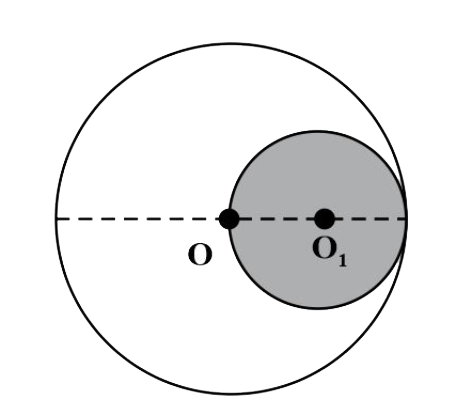As air passes through the nasal cavity, it is
Filtered in the nostrils
Moistened by mucus
Warmed to the body temperature
All of these
The correct Answer is:D
Step-by-Step Solution:
1. Understanding the Path of Air:
- Air enters the respiratory system through the nostrils.
- It then travels through the nasal cavity and into the nasopharynx before moving further into the respiratory tract.
2. Functions of the Nasal Cavity:
- The nasal cavity serves as a conducting zone for air.
- Its primary functions include filtering, moistening, and warming the air before it reaches the lungs.
3. Filtering the Air:
- The hair present in the nostrils acts as a filter, trapping dust particles and germs.
- This prevents harmful substances from entering the respiratory system.
4. Moistening the Air:
- The mucous membranes in the nasal cavity secrete mucus, which moistens the incoming air.
- This is important because dry air can irritate the respiratory tract.
5. Warming the Air:
- The blood vessels in the nasal cavity help to warm the air to body temperature.
- This ensures that the air is at an appropriate temperature for the lungs to handle.
6. Conclusion:
- As air passes through the nasal cavity, it is filtered, moistened, and warmed.
- Therefore, the correct answer to the question is: All of these (option D).
- Air enters the respiratory system through the nostrils.
- It then travels through the nasal cavity and into the nasopharynx before moving further into the respiratory tract.
- The nasal cavity serves as a conducting zone for air.
- Its primary functions include filtering, moistening, and warming the air before it reaches the lungs.
- The hair present in the nostrils acts as a filter, trapping dust particles and germs.
- This prevents harmful substances from entering the respiratory system.
- The mucous membranes in the nasal cavity secrete mucus, which moistens the incoming air.
- This is important because dry air can irritate the respiratory tract.
- The blood vessels in the nasal cavity help to warm the air to body temperature.
- This ensures that the air is at an appropriate temperature for the lungs to handle.
- As air passes through the nasal cavity, it is filtered, moistened, and warmed.
- Therefore, the correct answer to the question is: All of these (option D).
Topper's Solved these Questions
- BOOK - OSWAL PUBLICATIONCHAPTER - LIFE PROCESSESEXERCISE - Assertion And Reason Based MCQs17videos
LIFE PROCESSES
- BOOK - OSWAL PUBLICATIONCHAPTER - LIFE PROCESSESEXERCISE - Case - Based MCQs35videos
LIFE PROCESSES
- BOOK - OSWAL PUBLICATIONCHAPTER - HOW DO ORGANISMS REPRODUCE ?EXERCISE - CREATING BASED QUESTIONS6videos
HOW DO ORGANISMS REPRODUCE ?
- BOOK - OSWAL PUBLICATIONCHAPTER - MANAGEMENT OF NATURAL RESOURCES EXERCISE - CASE-BASED MCQs15videos
MANAGEMENT OF NATURAL RESOURCES
Similar Questions
Knowledge Check
- Question 1 - Select One
Sound is produced by humans when air passes through the narrow slit between the ________ present in the larynx.
AVocal cordsBPharynxCtongueDepiglottis - Question 2 - Select One
A spherical cavity is made in a lead sphere of radius R such that its surface touches the outsides surface of lead sphere and passes through the centre. The shift in the centre of mass of the lead sphere as a result of this following, is
 AR7BR14CR2DR
AR7BR14CR2DR - Question 3 - Select One
According to Newton, when a wave passes through a gas, changes taking place in pressure and volume of air are
AisothermalBisobaricCisochoricDadiabatic
If a ray passes from air to glass in a spherical glass slab and passes through the centre of the slab without deviation, then the angle of incidence from air to glass at the point on the glass slab is.
View SolutionName the cartilage which divides the nasal cavity into right and left nasal chambers.
View SolutionA fixed sphere of radius R and uniform density ρ has a spherical cavity of radius R/2 such that the surface of the cavity passes through the centre of the sphere. A particle of mass m is located at the centre (A) of the velocity. Calculated
(a) The gravitational field at A.
(b) The velocity with which the particle strikes the centre O of the sphere. (Neglect earth's gravity)View SolutionA light of wavelength 6500 A in air is passed through water of refractive index 1.3. The percentage change in wavelength will be nearly
View SolutionAir is breathed through
View Solution

